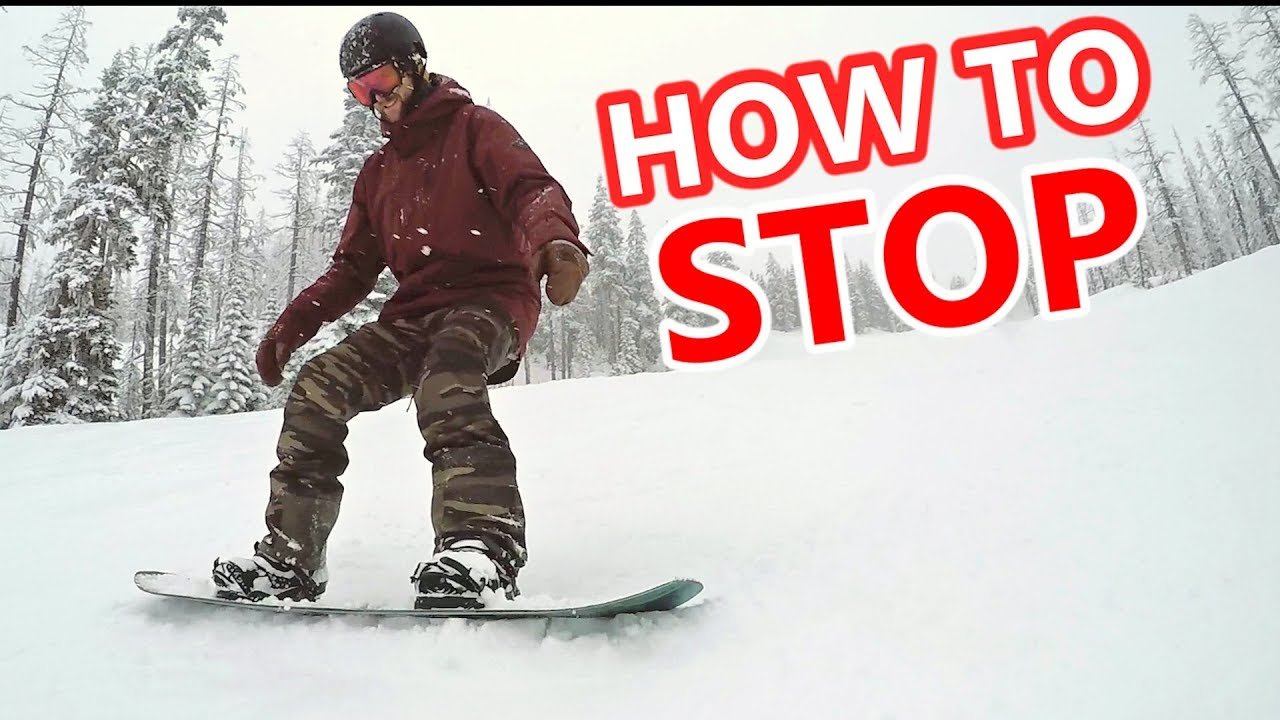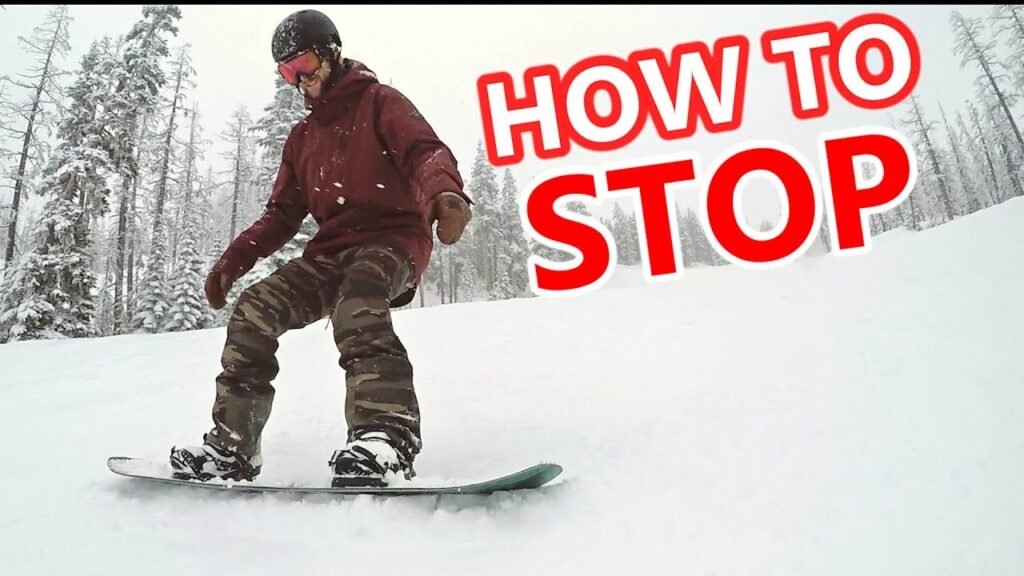
How To Stop On A Snowboard – Beginner Tips
In the video titled “How To Stop On A Snowboard – Beginner Tips” by SnowboardProCamp, the instructor shares three valuable tips for beginner snowboarders to improve their stopping skills. Stopping on a snowboard is an essential skill that provides more control, speed, and confidence while riding. The first tip emphasizes the importance of planning ahead and stopping with the snowboard positioned across the run for a smoother and easier stop. The second tip focuses on bending the hips, knees, and ankles to lift the edge away from the snow, giving beginners more control over their speed. Lastly, the instructor advises allowing the stop to happen gradually to maintain balance and control. Beginners can find more tips and tutorials in the beginner snowboard playlist.

Tip 1: Plan Ahead for a Complete Stop
Stopping with your board across the run is an important technique to master when learning how to stop on a snowboard. By planning ahead and stopping with your board completely across the run, you can ensure a much gentler and easier stop. If your board is on any kind of angle when you attempt to stop, it can make it difficult to maintain balance and control, and you might even end up falling or sliding out. By consciously making an effort to stop with your board across the run, you can enhance your stopping ability and ride with more confidence.
Benefits of a gentle and easy stop
Stopping with your board completely across the run has several benefits. Firstly, it allows you to maintain balance and control throughout the stop. When your board is aligned with the run, you can distribute your weight evenly, making it easier to maintain stability. Secondly, a gentle and easy stop minimizes the risk of injury. By avoiding sudden, abrupt stops, you can reduce the chances of straining or twisting your body. Lastly, stopping with your board across the run sets you up for a smoother transition into your next move or turn, enabling you to maintain the flow of your ride.
Tip 2: Bend Your Hips, Knees, and Ankles
Getting your edge up away from the snow is crucial for making a successful stop on a snowboard. To achieve this, you need to bend your hips, knees, and ankles. By bending these joints, you can effectively lift your edge away from the snow, allowing you to slow down and eventually come to a stop.
Bending for the heel stop
When performing a heel stop, think about sitting in a chair. By bending your hips, knees, and ankles, you can mimic the sitting position and lift your toe edge up away from the snow. This bending motion helps you dig your heels in and control your speed. Remember to maintain a balanced stance and distribute your weight evenly to ensure stability throughout the stop.
Bending for the toe stop
For a toe stop, focus on bending your hips, knees, and ankles. Visualize bending your knees towards the snow, as this will help lift your heel edge up, allowing you to dig your toes in and come to a stop. By bending these joints, you can effectively control your speed and execute a smooth and controlled stop.
Tip 3: Let the Stop Happen Gradually
Allowing the stop to happen gradually is essential for maintaining balance and control on your snowboard. If you try to stop too quickly, you may end up getting twisted on your snowboard, which can lead to a loss of balance and potential falls. Instead, focus on letting the turn come around gradually and smoothly.
Avoiding getting twisted on your snowboard
Getting twisted on your snowboard can be a common struggle when learning how to stop. To avoid this, make sure to distribute your weight evenly and keep your body aligned with your board. By maintaining a balanced stance and allowing the stop to happen gradually, you can minimize the chances of getting twisted and maintain control throughout the process.
Benefits of a smooth stop
A smooth stop offers numerous benefits. Firstly, it allows you to maintain balance and control throughout the stop, reducing the risk of accidents or falls. Secondly, a smooth stop keeps you in a better position to transition into your next move or turn, ensuring the continuity of your ride. Lastly, a smooth stop enables you to stay in control of your speed and navigate the terrain more effectively.
Staying balanced and in control
When stopping on a snowboard, staying balanced and in control is crucial. By following the previous tips and actively planning for a complete stop, bending your hips, knees, and ankles, and letting the stop happen gradually, you can enhance your ability to stay balanced and in control. Remember to maintain a centered stance, distribute your weight evenly, and focus on fluid movements. With practice, you’ll be able to stop with confidence and control, allowing you to progress in your snowboarding skills.
In conclusion, stopping on a snowboard is an essential skill for all beginners. By planning ahead and stopping with your board across the run, bending your hips, knees, and ankles to lift your edge away from the snow, and letting the stop happen gradually, you can improve your stopping technique and ride with more speed and confidence. Remember to practice these tips regularly and stay patient with your progress. Happy snowboarding!
